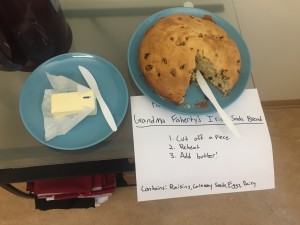Folk Piece
“The movie nightmare on Elm Street was filmed in my town, on Elm Street. One of the things that’s been a legend on elm street is that cars would be driving on Elm Street, like at night, and there would be a car behind them and they could see it and they could see it, and then all of a sudden it would just disappear. And suddenly someone would appear in front of their car. It was just like super freaky, and I don’t know, that’s just one of the stories that I’ve heard. So my friend tried to like fuck with people at night because he had an all black car that was really quiet. So he could like drive up right behind people and when there was nowhere to turn or anything he would turn off his lights and just roll on behind them and people would like pull over and freak out that he was like gone, but he was actually there the whole time”
Background information
The informant began by saying “Well, my town is boring, I don’t think we really have many cool stories or anything… Well, we did have Elm Street from that movie.” She had said that she’d never seen the movie, but that it had an impact on the way that people thought about the street. Especially kids her age, that weren’t born for another decade after the movies’ premiere, would tell stories of Elm Street, but not necessarily ones that originated from the movie.
Context
“No, it wasn’t just my friend, a lot more people did it. But, like, he just drove down it a lot and yeah, he did a few times.” She said that the prank itself was done by a lot of people, mostly older high schoolers, though. She had never witnessed it herself, but only heard about it.
Analysis
Pranks, or practical jokes, are performed for a variety of different reasons. In this circumstance, the prank is driven by a legend about a mysterious figure that would appear in front of people’s cars on the street where A Nightmare on Elm Street takes place. The legend is so widely known, that the exploitation of a plot point in the story can lead to drivers becoming very scared. It is interesting to note that A Nightmare on Elm Street doesn’t have a scene where there are cars driving down the road and the lights turn off. The original authored story transformed the street itself into somewhat of a legend, which in turn was exploited as a prank. This transition from authored material, to legend, to prank could be explored further with more data from other town members.
Also interesting is that older high schoolers are the one performing this prank. Presumably, these are drivers that had just acquired their license and are given some autonomy. That they take this new found freedom and also exploit it for humor and rebellion shows why this might be such a popular prank in this town.

